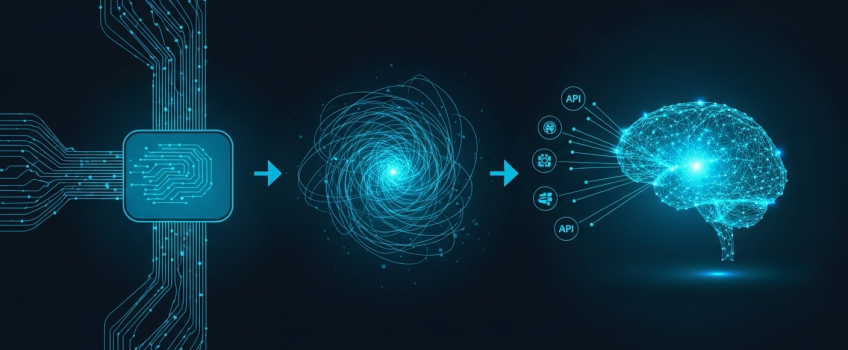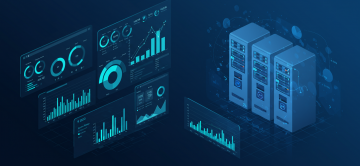Kafka to AI Agent Architecture

From Kafka Streams to Intelligent Action: A Modern Architecture for Real-Time AI Agents
For years, enterprise AI has operated with a fundamental handicap: latency. Models are trained on historical data, deployed as endpoints, and used for batch predictions or delayed analyses. This model provides valuable insights, but it's fundamentally reactive. In a world that operates in milliseconds, an insight delivered hours later is often a missed opportunity.
The critical "why": Businesses no longer just want to understand what happened; they need to influence what happens next, in real time. This requires a paradigm shift from passive model prediction to proactive, intelligent action. It demands an architecture that can process streaming data, enrich it with context, make a sophisticated decision, and execute an action—all within a fraction of a second. At ActiveWizards, we bridge the gap between high-performance data engineering and advanced AI to build these systems. This article lays out the architectural blueprint.
The Architectural Shift: From Batch Analytics to Real-Time Agency
The traditional data-to-AI pipeline involves a slow, sequential march: data is extracted from sources, loaded into a data warehouse, transformed in batches, and finally fed to a model. The result is a historical report.
The modern, real-time architecture is a continuous, flowing loop. It's a "sense, reason, act" cycle built on a streaming backbone. Apache Kafka sits at the heart of this, but it's the intelligent integration of stream processing with AI agent frameworks that unlocks true real-time agency. This architecture is not just faster; it's a fundamentally different and more powerful way of embedding intelligence into your operations.
Diagram 1: A modern architecture for real-time intelligent action.
Component Deep Dive 1: Kafka Streams as the Feature Engine
An AI agent is only as good as the data it receives. Raw event data (e.g., "user clicked button X") is often insufficient. The agent needs context and features, such as "how many times has this user clicked in the last 30 seconds?" or "is this transaction amount unusual for this user?"
Why Kafka Streams? Performing this feature engineering in real time is a classic stream processing task. Kafka Streams is the ideal tool for several reasons:
- Co-location: It's a simple library, not a separate cluster. Your processing logic lives with your application and scales with it.
- Stateful Processing: It has first-class support for state stores (backed by RocksDB and a Kafka changelog topic), making it perfect for windowed aggregations and joins.
- Ecosystem Integration: It reads from and writes to Kafka topics seamlessly, creating a clean, end-to-end streaming pipeline.
A typical Kafka Streams application in this architecture would consume raw topics, perform stateful operations, and produce a new, enriched topic that serves as the trigger for the AI agent.
// High-level concept for a Kafka Streams feature engineering app
StreamsBuilder builder = new StreamsBuilder();
// Consume raw transaction stream
KStream<UserId, Transaction> transactions = builder.stream("raw-transactions-topic");
// Perform a stateful aggregation: calculate average transaction value per user
KTable<UserId, AvgValue> userProfile = transactions
.groupByKey()
.aggregate(
() -> new AvgValue(), // Initializer
(userId, txn, aggregate) -> aggregate.update(txn.amount()), // Aggregator
Materialized.as("user-avg-txn-store") // State store
);
// Join the incoming transaction stream with the user's profile table
KStream<UserId, EnrichedTransaction> enrichedStream = transactions.join(
userProfile,
(txn, profile) -> new EnrichedTransaction(txn, profile.getAverage())
);
// Produce the enriched features to a new topic for the AI agent
enrichedStream.to("enriched-features-topic");
Component Deep Dive 2: The Agentic Core and its "Senses"
Once the enriched feature event hits its topic, the AI agent wakes up. This is where the transition from data processing to intelligent decision-making occurs. A modern agent is not just a single LLM call; it's a reasoning loop.
Upon receiving an event (e.g., an `EnrichedTransaction`), the agent orchestrator (built with a framework like LangGraph or CrewAI) initiates a process:
- Initial Analysis: The agent first analyzes the incoming feature data.
- Context Retrieval (RAG): The agent then queries its "senses" to gather more context. This is a critical step. It might perform a semantic search against a Vector Database to find similar past events, and query a SQL or Graph Database to retrieve structured facts about the user or product.
- Reasoning and Decision: With the trigger data and retrieved context in hand, the agent uses an LLM to reason through the situation and decide on the best course of action from a predefined set of tools.
A stateless agent is an amnesiac. For sophisticated use cases, the agent needs a memory of past interactions and decisions. This is a major production challenge. Where should this conversational or operational state live? While Kafka Streams handles data state, agent memory might require a low-latency key-value store like Redis or DynamoDB. Architecting this "memory layer" to be both fast and consistent with the data stream is a complex task where expert design is crucial to avoid race conditions and inconsistent behavior.
Closing the Loop: Action, Audit, and Observability
An agent's decision is worthless if it can't be executed. The final, critical piece of the architecture is the agent's ability to "act" in the real world. This is accomplished by giving the agent access to a set of secure "tools," which are typically API endpoints.
Furthermore, for any production system, every action must be auditable. A key pattern is to have the agent write a structured event describing its decision and action to a final Kafka topic (e.g., `agent-actions-audit`). This creates an immutable, timestamped log of everything the AI has done, which is invaluable for debugging, compliance, and performance analysis.
Is Your Organization Ready for Real-Time AI?
This architecture is powerful, but it requires a solid foundation. Before embarking on this journey, consider the following:
- Do you have a clear, high-value business case that demands sub-second latency (e.g., fraud detection, real-time personalization, supply chain alerts)?
- Is your data already flowing into a centralized streaming platform like Kafka, or is it locked in siloed, batch-oriented systems?
- Does your team possess the dual skill sets of data engineering (Kafka, stream processing) and AI engineering (LLMs, agent frameworks, RAG)?
- Have you established a robust MLOps and DataOps practice for monitoring, deploying, and managing both the data pipelines and the AI models?
The ActiveWizards Advantage: Engineering Intelligence in Motion
Building a real-time intelligent agent is the pinnacle of modern data architecture. It requires a seamless fusion of scalable data engineering and sophisticated AI development. The challenges of state management, system observability, and robust tool integration are complex and have significant business consequences if designed poorly.
ActiveWizards specializes in architecting these end-to-end systems. We build the resilient Kafka foundation, engineer the real-time feature pipelines with Kafka Streams, and develop the intelligent agents that turn your data streams into decisive, automated action.
Put Your Data to Work, in Real Time
Ready to move beyond reactive analytics and build an AI system that acts at the speed of your business? Our experts can help you design and implement a production-grade, real-time agent architecture tailored to your most critical challenges.



Comments (0)
Add a new comment: